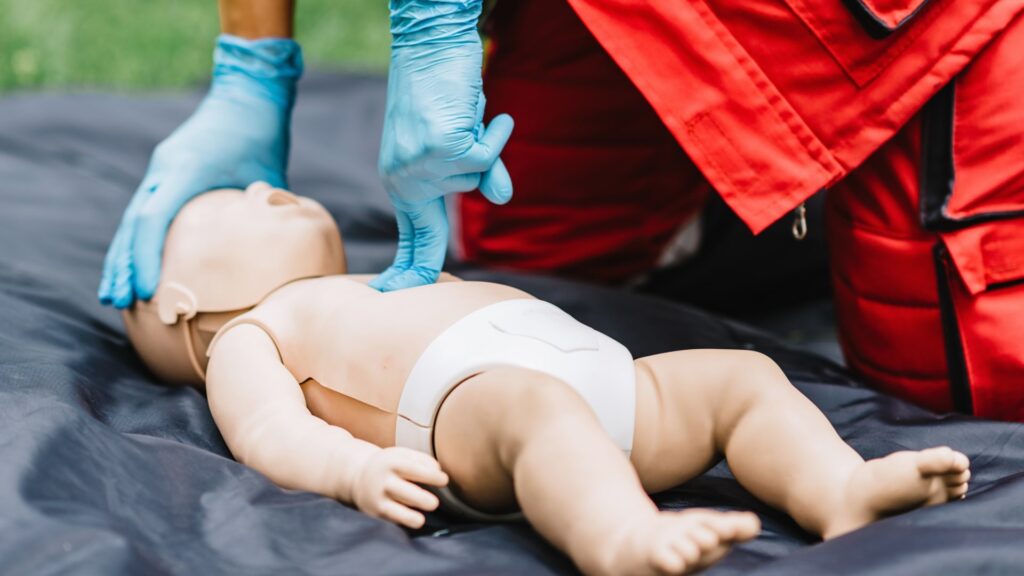Without a doubt, CPR is a life-saving technique that has been prevalent since 1956; however, with each cardiac arrest situation being unique in its own way and the standard procedure having been around for so long, innovators throughout the years have sought ways to enhance these tried and true practices. As a result of their efforts we now see various methods developed specifically for specific scenarios.
Mouth-to-mouth resuscitation is performed by rescuers when they need to assist respiration in a victim who can’t breathe independently. Although countless Canadians possess the knowledge and skills of Cardiopulmonary Resuscitation (CPR), they may be reluctant to use them on a stranger due to their concern of contracting illnesses, especially if mouth-to-mouth resuscitation is required.
Mechanical ventilation is a more effective way to perform mouth-to-mouth resuscitation. Forming part of CPR protocols, mouth-to-mouth resuscitation is also known as rescue breaths.
When to Give Mouth-to-Mouth Resuscitation
In some situations, mouth-to-mouth resuscitation is an initial first aid/CPR procedure to help individuals who have stopped breathing. The rescue breaths help the incapacitated person as the person helping them get air into their lungs.
Some situations requiring rescue breathing include cardiac arrest in babies and children caused by non-cardiac conditions, near-drowning victims, drug overdoses, asthma attacks, and various types of poisoning (including monoxide poisoning).
Mouth-to-mouth resuscitation skills are essential for safely performing the procedure, and you can get these by receiving CPR training.
Inquire about First Aid & CPR Training Course
Certify for First Aid training learn skills that increase their confidence and willingness to respond to others in a crisis as you complete the course with us. Call our toll-free number to know more.
How to Give Mouth-to-Mouth Resuscitation
Before performing the mouth-to-mouth resuscitation, you must determine if the patient is unconscious and check for a pulse. Also, call 911 or get someone else to call.
- First, call or tap the victim; if they don’t respond, immediately start the mouth-to-mouth resuscitation.
- Place them on a flat surface.
- Tilt the person’s head back gently with your hands. Then, place one hand on their forehead, and use your two fingers to lift their chin with the other hand.
- Bend your ear closer to the victim to feel the air exhaled from their mouth.
- You also need to observe the person’s chest to see if it’s rising and falling.
- Next, check for any obstructions in their airway; if you see anything, clear it away.
- Pinch the victim’s nose and take a deep breath before covering their mouth with yours and give them breaths, pausing to exhale and inhale. You need to place your mouth over the mouth and nose of infants.
- Depending on the victim’s size, blow two quick breaths, checking to ensure their chest rises. In infants, the breaths administered are shallow and gentler.
- Continue the rescue breaths steadily, taking short intervals now and then to rest.
- Constantly observe that the victim’s chest rises and falls to ensure your rescue breathing is effective.
- Keep checking for a pulse while continuing the rescue breaths.
- You can also use a bag valve mask to perform the procedure.
- The uninterrupted procedure must continue until the person’s breathing and circulation return.
People with no CPR training should allow a trained rescuer to provide the rescue breaths, preferring to give hand compressions.

How Effective is the Mouth-to-Mouth CPR
According to researchers, chest compressions are more effective than mouth-to-mouth resuscitation, primarily when performed by untrained people. Studies have also shown that cardiac arrest victims are two times less likely to suffer brain damage with hands-only CPR.
Why Mouth-to-Mouth CPR has Adverse Effects
Several factors lead to adverse effects, including that bystanders often fear giving mouth-to-mouth resuscitation, reducing their victim’s chances of survival. Rescue breaths also interrupt chest compressions which have proven more efficient in moving oxygen within the body.
Studies have shown that cardiac arrest patients still have oxygen in their bloodstream. Therefore, the priority should be to restart the heart. However, for children and infants with cardiac arrest, the situation changes.

Do I Have to Give Mouth-to-Mouth During CPR?
In some cases, yes. Mouth-to-mouth resuscitation in some cardiac arrest victims caused by medical emergencies may have insufficient oxygen in their bloodstream. These victims include those from drowning, drug overdose, etc.
That’s why the procedure of mouth-to-mouth resuscitation can help save their lives. However, the process requires trained individuals, especially when using a mask. Professionals learn to insert a tube in the victim’s windpipe to ensure that the oxygen provided goes directly into the patient’s lungs.
Other types of mouth-to-mouth resuscitation include mouth-to-nose breathing for patients with maxillofacial injuries and in the presence of vomit in the victim’s mouth. Mouth-to-mask resuscitation is another standard method used, helping to prevent cross infections.
Where You can Learn the New Ways of Performing CPR
CPR continues to evolve. Since the 1960s, when both mouth-to-mouth and closed-chest cardiac massages both proved helpful with ventilation, we now have better evidence that prescribes chest compressions as a better way to help adults in most cases of cardiac arrest.
You can help someone in a medical emergency with the right CPR with proper training. Whether you need specific CPR training for your workplace or to help others, Coast2Coast offers lessons in several areas across Ontario. Learn the latest techniques for performing the various forms of cardiopulmonary resuscitation, including using an AED, and be there for others in medical emergencies.



















